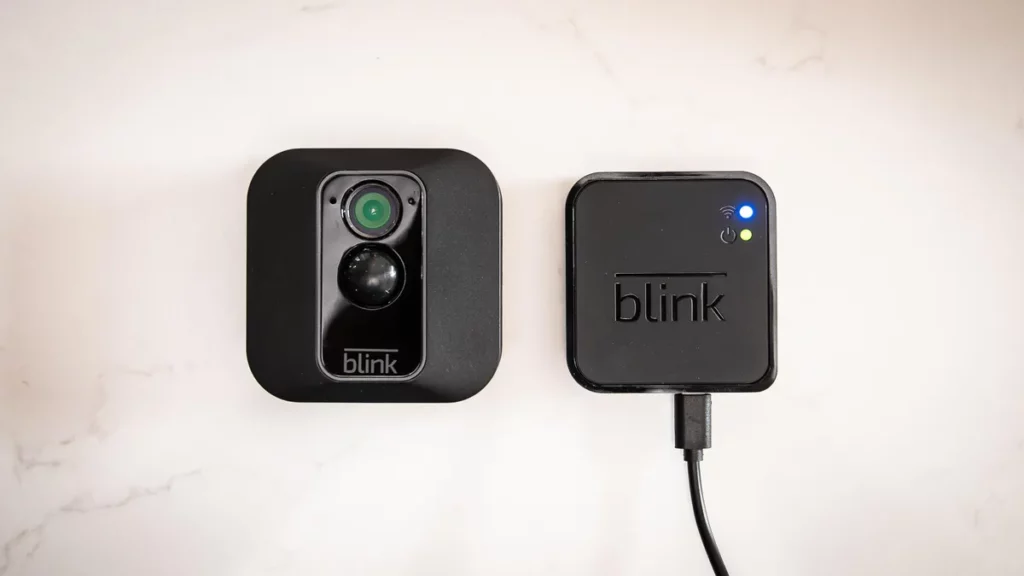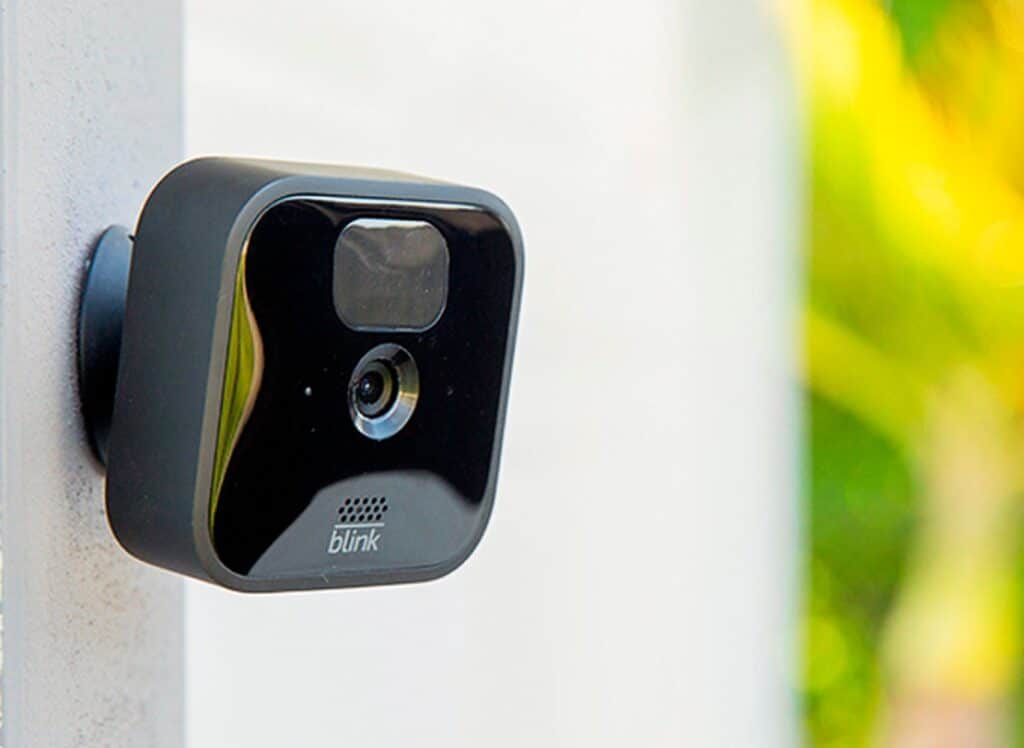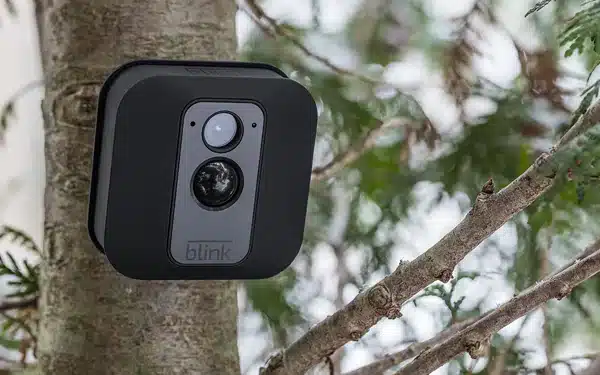Introduction
The Blink Outdoor Camera is a popular choice for home security due to its wireless design and easy installation. One crucial aspect of maintaining the camera’s functionality is knowing how to change its batteries effectively. Whether you’re replacing worn-out batteries or simply want to keep your camera powered for extended periods, understanding the battery replacement process is essential.
Before starting, gather the tools required for the battery replacement. You’ll need a small Phillips-head screwdriver and fresh AA lithium batteries. Lithium batteries for their longer life and better performance in outdoor conditions. A responsible user, it’s crucial to dispose of the old batteries correctly. Follow local regulations and recycling guidelines to ensure safe disposal of used batteries.
On the back of the Blink Outdoor Camera, you will find a battery compartment. This compartment is usually secured with a small screw or latch. Use the Phillips-head screwdriver to remove the screw or open the latch and access the compartment. Inside the battery compartment, you’ll find the existing batteries. Gently remove the old batteries, taking note of their orientation. The Blink Outdoor Camera typically uses two AA batteries.

Do Blink cameras have replaceable batteries?
Yes, Blink camera batteries are replaceable and easy to find. Because they use the common AA batteries, you probably already have the replacement batteries in your home, or at the closest convenience store. At the back of the device is a tool that you use to unscrew the back cover to access the batteries.
Blink cameras use replaceable batteries, unlike other security cameras. This design allows for flexible camera positioning, quick installation, and use in regions without power outlets.
Blink cameras use lithium-AA batteries. Most retailers sell these batteries. Lithium batteries outlast alkaline batteries, especially outdoors. To replace the batteries in a Blink camera, you will need a small Phillips-head screwdriver and fresh AA lithium batteries. A screw or lock secures the camera’s battery chamber on the back.
By removing the screw or opening the latch, you can access the compartment and remove the old batteries. Take note of the battery orientation before inserting the new batteries, aligning them correctly with the positive (+) and negative (-) terminals. Once the new batteries are in place, securely close the battery compartment and ensure a weatherproof seal.
How do I check my outdoor camera battery Blink?
In the camera thumbnail and select General Settings. Battery strength indication is either OK or Needs Replacement. As a warning, the Blink app will display a “High Usage” alert message when your camera settings are likely to cause higher than normal battery consumption.
Open the Blink mobile app: Launch the Blink mobile app on your smartphone or tablet. Make sure you are logged in with your Blink account credentials.
Select the camera: From the app’s home screen, locate and select the outdoor camera you want to check the battery status for. The app will display a list of all your Blink cameras associated with your account.
Access camera settings: Once you’ve selected the desired outdoor camera, navigate to the camera settings. Look for an icon or menu option that allows you to access the camera’s settings. It is usually represented by a gear or cogwheel icon.
Check battery level: Within the camera settings, you should find an option to view the battery status. It might be labeled as “Battery Level” or “Battery Status.” Tap on this option to access the battery information.
View battery percentage: The app will display the current battery percentage of your outdoor camera. This percentage represents the remaining charge in the battery. A higher percentage implies a fuller battery, whereas a lesser percentage signifies a battery replacement is imminent.
Set up battery alerts (optional): Some Blink camera models and app versions allow you to set up battery alerts. These alerts notify you when the battery level drops below a certain threshold. If available, you can configure the desired battery alert threshold within the camera settings to receive timely notifications.
Is Blink Outdoor camera battery powered?
Powerful two-year battery life
With Blink’s own chip technology, Outdoor runs on two AA lithium batteries that can last up to two years. This means that you can keep an eye on what’s going on in and around your home without having to worry about changing the batteries often.
The Blink Outdoor camera works with the help of AA lithium batteries. These batteries are easy to find and easy to buy from a variety of stores and online sellers. It’s important to know that Blink suggests using lithium batteries for the best performance, especially outside where extreme temperatures can shorten battery life.
How the Blink Outdoor camera is used, how many motion events are captured, and how it is set up affect its battery life. However, Blink cameras handle power efficiently, extending battery life. Battery life depends on motion detection and live view use.
Blink cameras are made to go into a low-power mode when they are not constantly recording or sending footage. This saves battery power. When they see movement in their field of view, they will “wake up” and start to record. This power-saving feature helps the camera’s battery last as long as possible and makes sure it works when it’s needed the most.
To check the battery status of your Blink Outdoor camera, you can refer to the Blink mobile app. The app provides information on the current battery level, allowing you to monitor the remaining charge. This way, you can plan for battery replacement in a timely manner to ensure uninterrupted surveillance.

How long do outdoor Blink camera batteries last?
Up to two years
In terms of the latest point of view, Blink has recently released a new camera model, the Blink Outdoor, which boasts a battery life of up to two years on two AA lithium batteries.
On average, with typical usage and settings, Blink estimates that the batteries in their outdoor cameras can last up to two years. This estimation assumes an average of 4,000 five-second events per year. However, it’s essential to remember that individual usage patterns may result in variations in battery life.
The actual battery life of the Blink outdoor cameras will depend on factors such as the frequency of motion events, the duration of recordings, the number of live views accessed, and the overall camera activity. If your camera is frequently triggered by motion events or experiences a high volume of live views, the battery life may be shorter than the estimated two years.
Environmental conditions can also impact battery performance. Extreme temperatures, especially cold temperatures, can affect battery life. In colder climates, the battery life may be slightly reduced compared to milder environments. On the other hand, extremely hot temperatures can also impact battery performance.
To help manage battery life, Blink cameras are designed to enter a low-power state when not actively recording or transmitting footage. This power-saving feature helps extend battery life by conserving power when the camera is not in use.
To check the battery level of your Blink outdoor camera, you can use the Blink mobile app. The app provides information on the current battery status, allowing you to monitor the remaining charge. When the battery level becomes low, typically below 10%, Blink recommends replacing the batteries to ensure uninterrupted surveillance.
Are Blink cameras battery operated?
Blink Indoor is a wireless, battery-powered security camera that helps you check in on your home day or night with infrared night vision. With long-lasting battery life, Indoor runs for up to two years on two AA lithium batteries (included).
Blink cameras are designed to be wireless, allowing users to place them virtually anywhere within range of their Wi-Fi network. This wireless design eliminates the hassle of running cables and enables users to position the cameras strategically for optimal surveillance coverage.
The power source for Blink cameras is a set of replaceable batteries. Specifically, Blink cameras use AA lithium batteries, which are widely available and can be easily purchased from various retail stores or online retailers. It is important to note that Blink recommends using lithium batteries for optimal performance, especially in outdoor conditions where extreme temperatures can impact battery life.
The battery life of Blink cameras can vary based on various factors such as camera usage, motion events recorded, camera settings, and environmental conditions. However, Blink cameras are known for their efficient power management, designed to extend battery life. The exact battery life experienced will depend on how frequently the camera is triggered by motion events, how often live views are accessed, and other factors specific to individual usage patterns.
To check the battery status of your Blink cameras, you can use the Blink mobile app. The app provides information on the current battery level, allowing you to monitor the remaining charge. This way, you can plan for battery replacement in a timely manner to ensure uninterrupted surveillance.
Why are my Blink batteries dying so fast?
Extreme Temperature Conditions
Extreme heat or cold will quickly drain their power, significantly affecting their performance. If you are in a region that is experiencing too much hotness or coldness, your batteries could be draining constantly because of the extreme temperature conditions.
Camera activity: Excessive camera activity, such as frequent motion detection and recording, can drain the batteries faster. If your camera is placed in an area with constant motion or if the sensitivity settings are too high, it may trigger more often, leading to increased battery usage. Adjusting the camera’s motion detection settings or repositioning the camera can help optimize battery life.
Live view usage: Viewing the live stream frequently can consume more battery power. Each time you access the live view, it activates the camera and requires additional power. Limiting the frequency of live view usage can help conserve battery life.
Weak Wi-Fi signal: Poor Wi-Fi signal strength can cause the Blink camera to use more power to maintain a stable connection. If your camera is far from the Wi-Fi router or obstructed by walls or other objects, it may struggle to maintain a strong signal. Consider repositioning the camera closer to the router or adding a Wi-Fi extender to improve signal strength.
Extreme temperatures: Extreme hot or cold temperatures can impact battery performance. Batteries tend to drain faster in very cold conditions, while high temperatures can degrade battery life. If your Blink camera is exposed to extreme temperatures, it may contribute to faster battery drain. Consider relocating the camera to a more moderate environment, if possible.
Does the blink outdoor camera record 24 7?
Blink cameras do not offer continuous recording, though you can leave the system armed for any interval of time.
When the Blink Outdoor camera detects motion within its field of view, it will begin recording a clip of the triggered event. The camera’s motion detection sensors are designed to detect movement and initiate recording promptly. The length of the recording is typically adjustable, ranging from a few seconds to several minutes, depending on the settings you have configured.
After the motion-triggered recording is complete, the Blink Outdoor camera will enter a standby mode until the next motion event occurs. This approach significantly reduces power consumption compared to continuously recording 24/7.
The recorded clips are stored in the Blink cloud, and users can access and review them through the Blink mobile app or web interface. The Blink cloud provides free cloud storage for a limited number of clips, depending on the subscription plan. Older clips may be automatically deleted to make room for new recordings. However, it’s worth noting that Blink offers optional subscription plans, such as Blink Plus or Blink Premium, which provide extended cloud storage and additional features.
Why is my Blink camera not working after changing battery?
If your Blink Camera is not working after battery change, power cycle the device and reseat the batteries properly. Use only AA lithium 1.5 V batteries for powering the Camera. You could try deleting and re-adding the Camera from the app.
Battery quality: Ensure that you are using fresh, high-quality AA lithium batteries as recommended by Blink. Low-quality or expired batteries may not provide sufficient power for the camera to operate correctly. Try using a different set of batteries to see if it resolves the issue.
Battery compartment: Make sure the battery compartment is securely closed and that the compartment seal is intact. A loose or improperly closed battery compartment can interrupt the power connection and cause the camera to stop working.
Power cycle the camera: Try power cycling the camera by removing the batteries, waiting for a few seconds, and then reinserting the batteries. This action can help reset the camera’s internal components and resolve any temporary issues.
Firmware update: Check if there are any available firmware updates for your Blink camera. Updating the camera’s firmware can address software-related issues and improve compatibility with the new batteries.
Reset the camera: If the camera still doesn’t work, you can try resetting it to its default settings. Look for a small reset button on the camera or consult the Blink documentation for specific instructions on how to perform a factory reset. Please note that performing a factory reset will erase any previously saved settings, and you will need to set up the camera again.

Conclusion
Blink Outdoor Camera is essential for maintaining its functionality and ensuring uninterrupted home security surveillance. By following the step-by-step instructions outlined in this guide, you can easily replace the batteries and keep your camera powered up and ready to Outdoor security capture any activity in its field of view. Always refer to the official Blink user manual or consult Blink’s support resources for any specific instructions or troubleshooting related to your camera model. With these guidelines in mind, you can confidently maintain and power your Blink Outdoor Camera for optimal home security.
Remember to gather the necessary tools, such as a small Phillips-head screwdriver and fresh AA lithium batteries, before beginning the battery replacement process. Take care to locate the battery compartment and remove the old batteries, paying attention to their orientation. Insert the new batteries, aligning them correctly with the positive and negative terminals, and securely close the battery compartment.
After replacing the batteries, it’s crucial to test the camera’s functionality to ensure it connects to the Blink app or any associated devices. If any issues arise, double-check the battery orientation and the secure connection. Additionally, responsible battery disposal is important. Make sure to follow local regulations and recycling guidelines to dispose of the old batteries properly.

